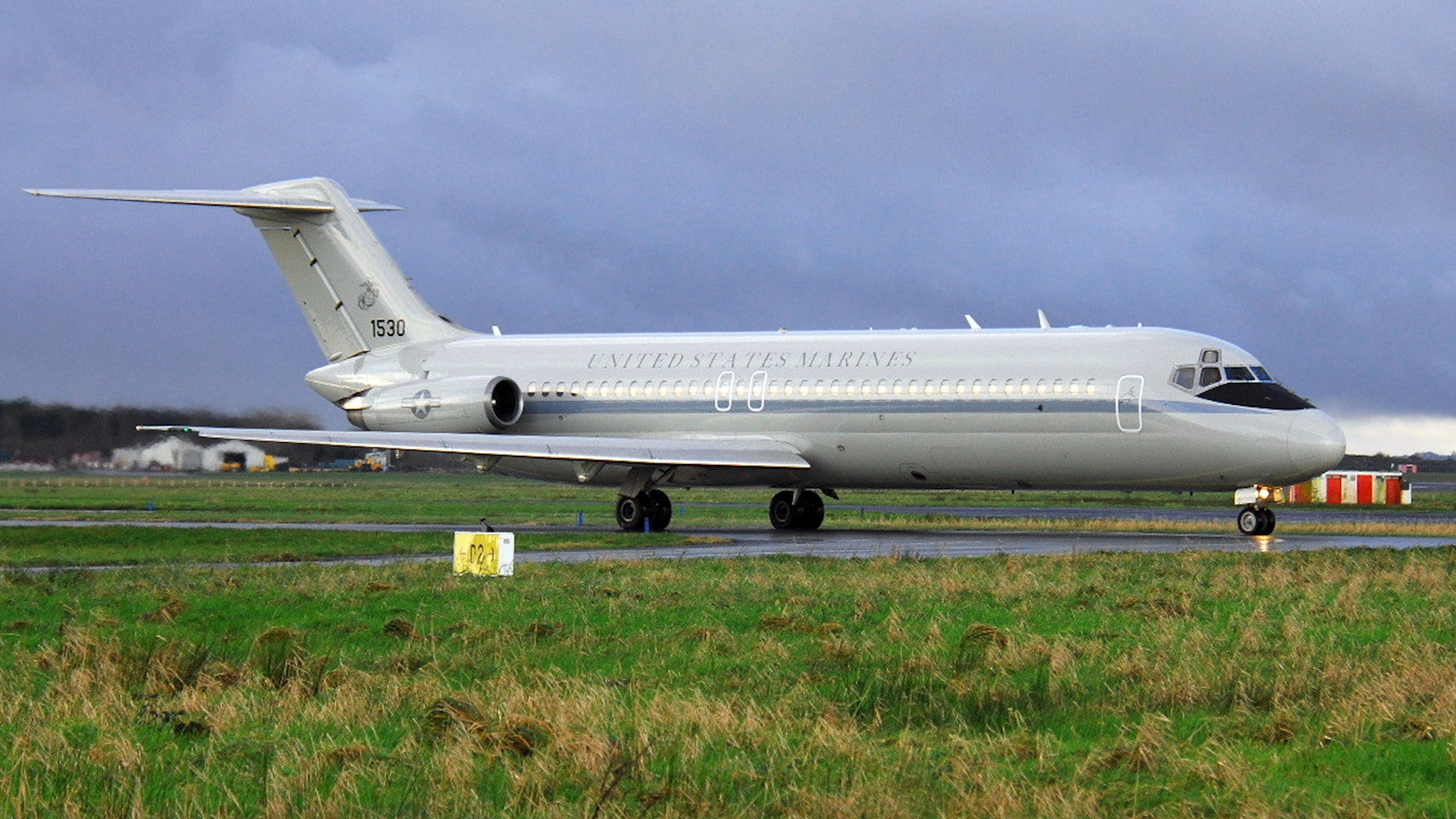The U.S. Air Force has given a former U.S. Marine Corps C-9B Skytrain II transport plane a new lease on life. The service says it has taken ownership of the militarized McDonnell Douglas DC-9 airliner to use a sensor testbed.
The Marine Corps officially retired its last two C-9Bs in 2017. However, planespotters, including those using online flight tracking software, had begun to spot the aircraft in question, which has the Bureau Number 161529, flying again by at least November 2020, still wearing its Marine Corps markings. Since then, it has been tracked flying in Colorado, Texas, Minnesota, and Kansas.
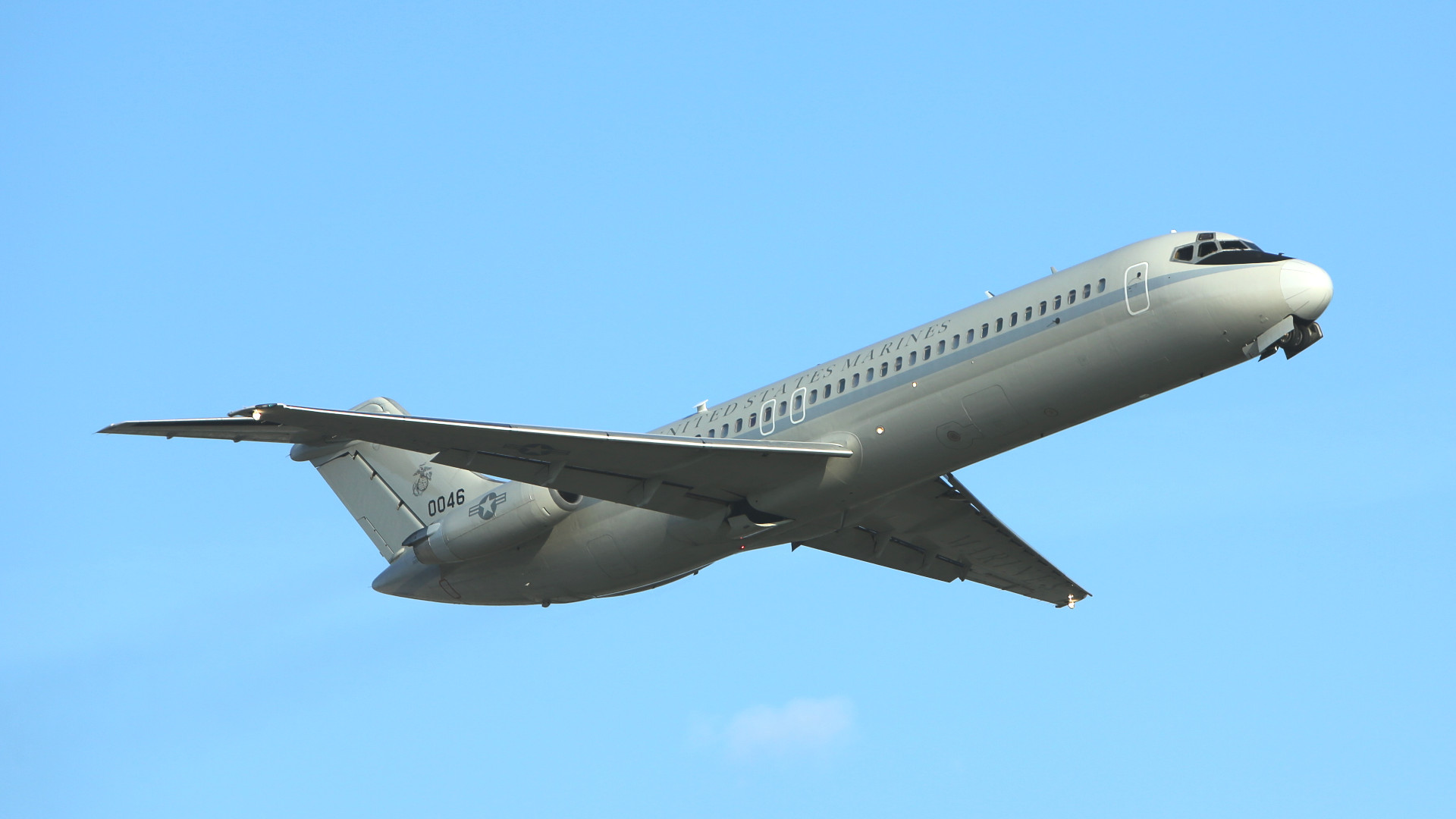
The War Zone reached out first to the Marine Corps’ main public affairs office, which redirected us to the Air Force. Ann Stefanek, an Air Force spokesperson, subsequently confirmed the service had acquired the aircraft and its new role.
The Marine Corps first began flying the C-9B in 1976, three years after the U.S. Navy started using the type. The Navy originally acquired 161529, before transferring it to the Marines.
Before their retirement some 41 years later, Marine’s Skytrain IIs were primarily used as VIP transports, including for the Commandant of the Marine Corps, as well as the Marine Corps Band. Later in their careers, the service employed them for more general passenger and cargo transport duties. The C-9B’s name is a reference to the iconic World War II-era C-47 Skytrain, a militarized Douglas DC-3 airliner that was an essential transport aircraft type for U.S. and other allied forces operating around the world.
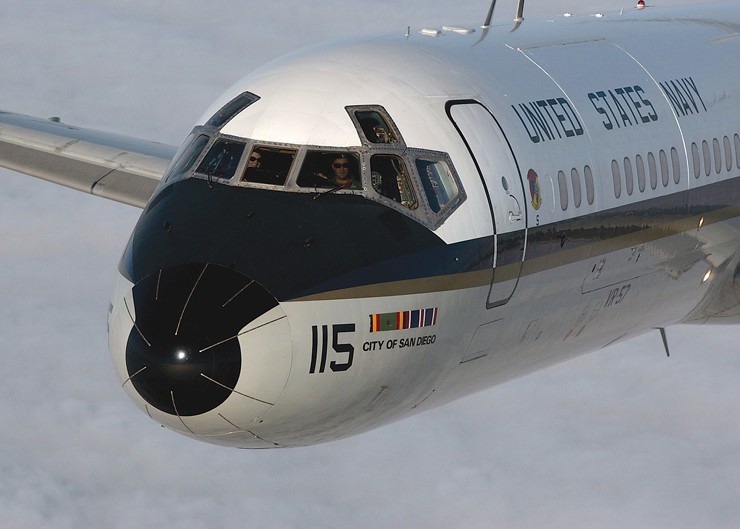
The U.S. Air Force had been the first to field a militarized DC-9 back in 1968, when it began flying the C-9A Nightingale. The C-9A, the name of which is a reference to Florence Nightingale, an English woman who lived from 1820 until 1910 and is credited with creating the idea of nursing as we know it today, was, unsurprisingly, primarily intended to be medical evacuation aircraft. The Air Force also employed it as a general passenger and cargo transport, as well, as did the Navy. The Air Force also had a trio of VC-9C executive transports, which were used for a time as what the service refers to as “distinguished visitor transports,” aircraft that are often referred to by the callsign “Air Force Two,” which they use when the Vice President is onboard.
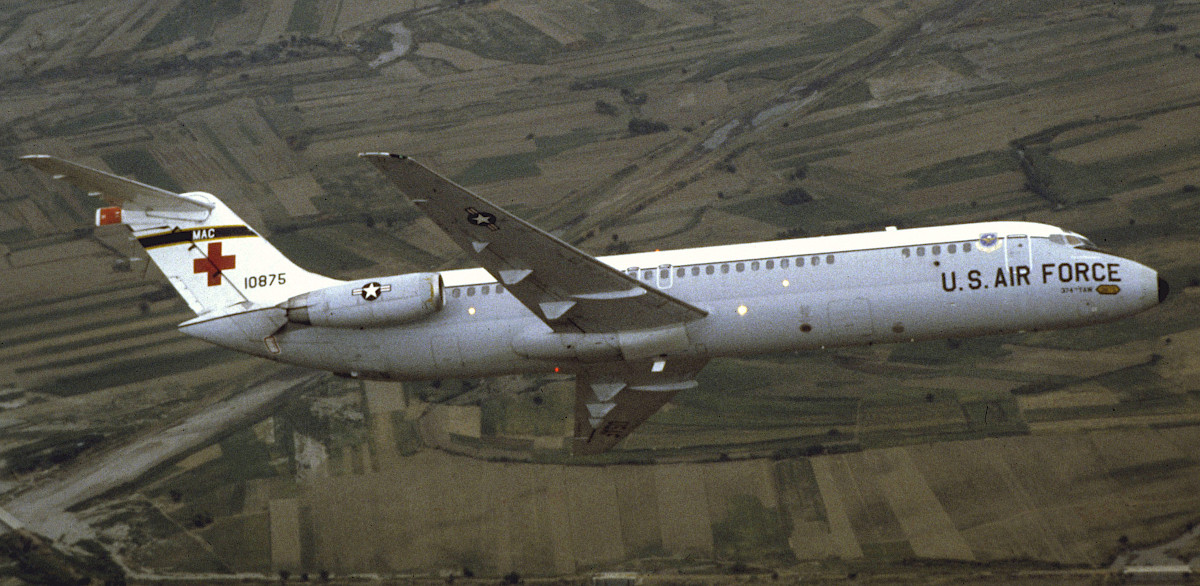
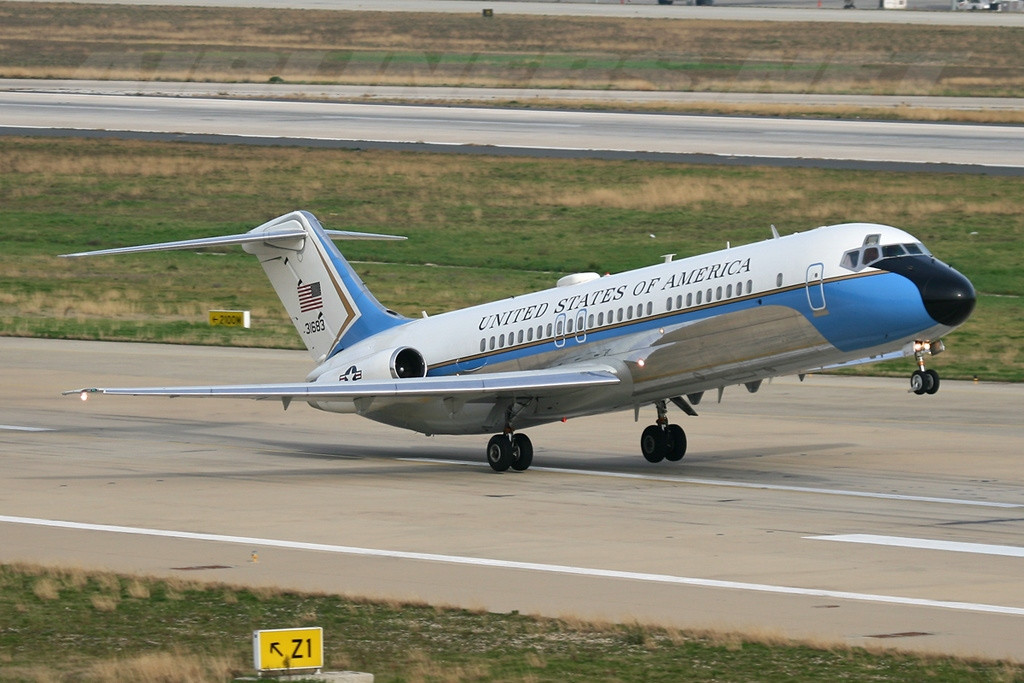
The Air Force retired its last C-9s in 2011, while the Navy did the same in 2014. The Air Force has since used a variety of other airlifters, including the C-130 Hercules and the C-17A Globemaster III, for aeromedical evacuation missions, while Boeing 757-based C-32As have largely taken over the distinguished visitor transport role. Air Force C-40 Clippers, based on the Boeing 737, also operate as VIP transports. The Navy and Marine Corps replaced their C-9Bs with variants of the C-40, as well.
That the Air Force has now pulled 161529 out of retirement to use as a testbed is interesting, but not entirely unprecedented. Though the Air Force has not said what program or programs the aircraft is expected to support, an airliner-sized jet would offer ample space to install a wide variety of sensors and other associated systems for various research and development and test and evaluation purposes.
It wouldn’t be the first time that a C-9/DC-9 has been seen flying in this type of role. Four years ago, The War Zone looked into the case of another similar aircraft, which features a distinctive new nose section with could accommodate sensor packages, including radars and missile seekers. This plane, sometimes referred to as an NC-9D and Firebird II, also has a large number of antennas on top of and below the fuselage.
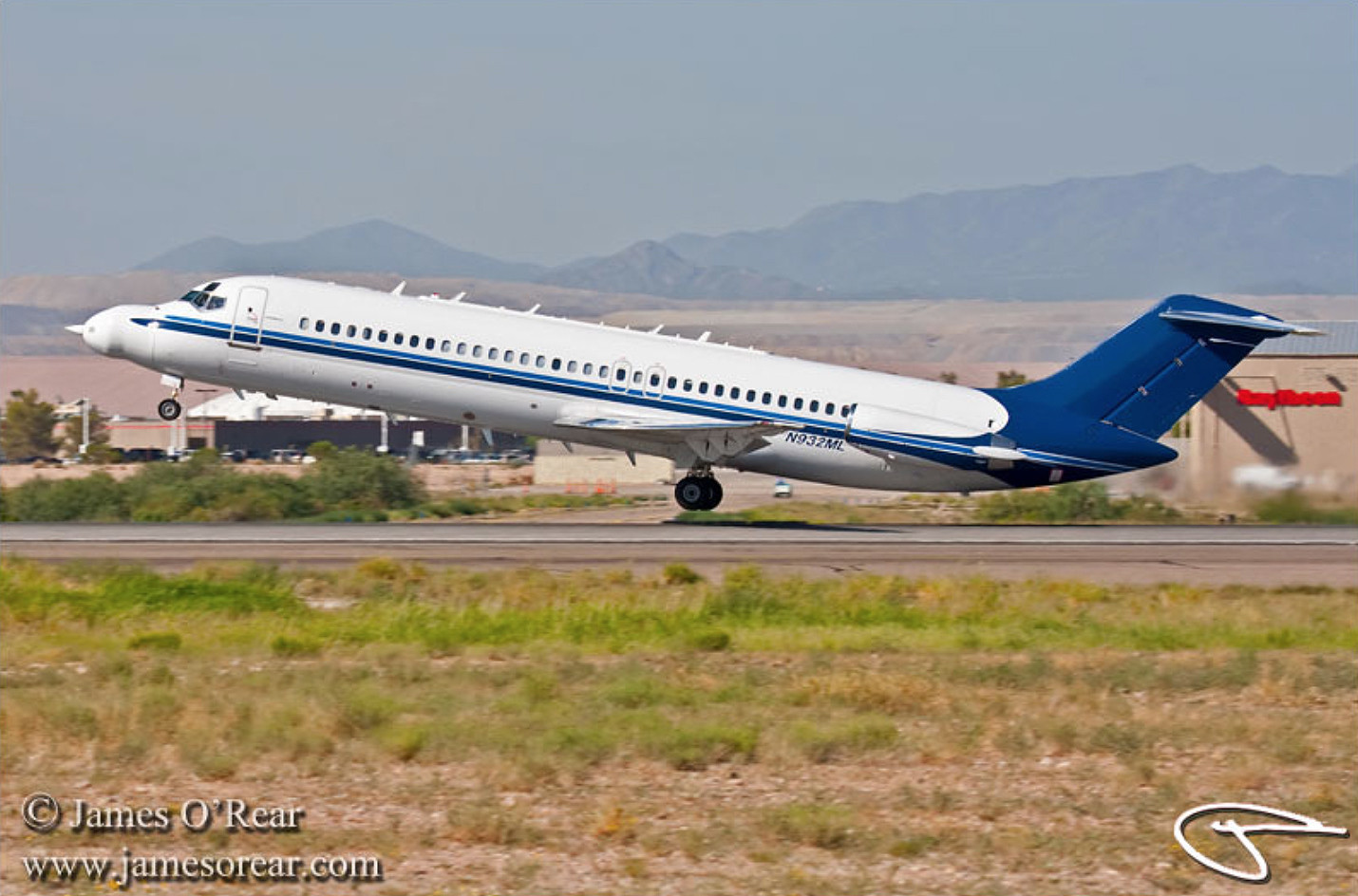
The aircraft is associated with the Navy, and Naval Air Weapons Station China Lake in California, in particular, which is one of the service’s top flight test and general research and development facilities. In fact, the aircraft previously wore a U.S. civil registration code, N932ML, which was registered to the Navy itself. The exact current owners and operators of the plane, which also has past links to defense contractors BAE Systems and Raytheon and is now associated with the bogus U.S. civil registration code N879AD, are unclear. You can read more about this plane and its history here.
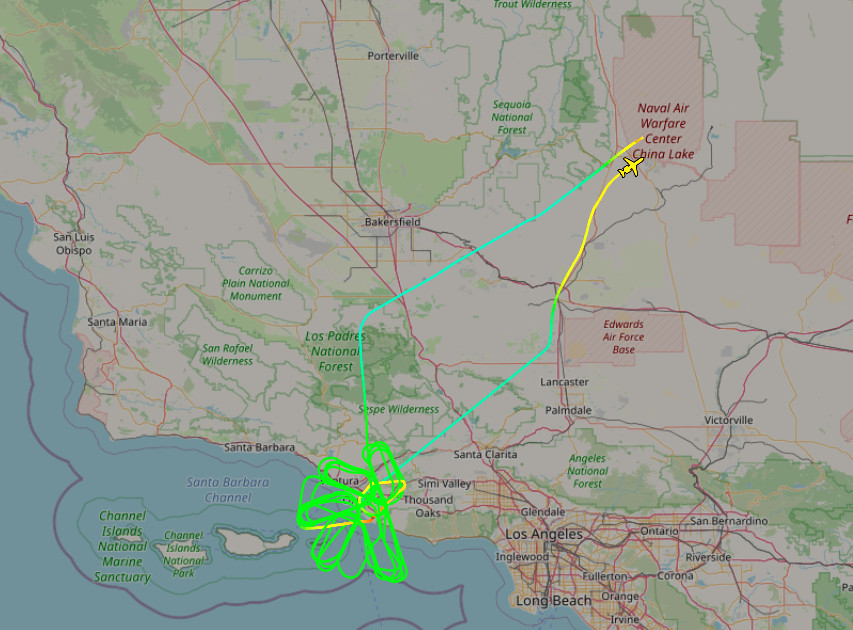
Last year, The War Zone also delved into the activities of a mysterious 737 with the U.S. civil registration code N712JM that the Air Force had acquired. Interestingly, that jet, just like 161529, had been tracked flying in and out of Colorado Springs Airport. This airport, which is adjacent to what is know called Peterson Space Force Base, previously known as Peterson Air Force Base, is home to a facility belonging to the Sierra Nevada Corporation (SNC). SNC is a premier aircraft “integrator” responsible for extensive conversions of existing planes, often for military purposes, including for various branches of the U.S. armed forces. When it opened its facility at Colorado Springs Airport in 2017, the company said it was part of its “Intelligence, Surveillance and Reconnaissance (ISR) business area.”

The 737, which The War Zone has not seen much of in the past year or so, may also have been linked to the Air Force’s Rapid Capabilities Office (RCO). RCO is responsible for running very advanced and high-priority projects and its current portfolio includes the B-21 Raider stealth bomber program and the Advanced Battle Management System (ABMS) effort, among other programs. This jet could be destined to become the next “RAT 55.” That callsign is commonly used to refer to a highly modified and top-secret Air Force 737, officially designated as an NT-43A, that is employed as a signature measurement testbed.
The Air Force has also already disclosed that an unspecified business jet has been employed as an avionics risk-reduction testbed in support of the B-21 program. This is thought to be one of Northrop Grumman’s Gulfstream testbeds.
ABMS is a major service-wide initiative that contains a large number of different sub-projects, including the development of advanced communications suites, low-cost unmanned aircraft, and networks of distributed sensors, among other efforts. It’s not hard to see how the Air Force’s ex-Marine C-9B could be used to support various portions of this larger program.
Of course, the Air Force’s “new” C-9B could very well be intended to support the development of other sensors. There are various potentially relevant programs publicly known to be in the works now and more can only exist in the classified realm. Nothing would necessarily preclude the jet from being used a tested for multiple projects, either. “Sensors” is a broad category, as well, which can cover everything from radars to imaging systems to receivers designed to pick up electromagnetic emissions. We really can’t say for sure based on what we know now.
What is clear is that this former Marine transport jet is headed for a second career with the Air Force and we may well be seeing this jet in very interesting places in the near future.
Contact the author: joe@thedrive.com
